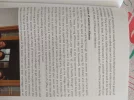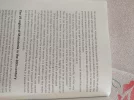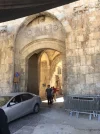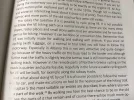- Time of past OR future Camino
- Several and counting...
Wednesday 24 April 2019
Day 0
I walked the Via Francigena (VF) from Canterbury to Rome in the spring of 2018 and later I walked onward from Rome to Brindisi. Some people call this the VF del Sud but some object to this term. I am neutral on this issue.
If I had stopped in Rome that might have been it. Going beyond Rome, for me, means sort of continuing to Jerusalem. There is no other satisfactory end point. I blogged the first part of my VF (walkingtim.com) but the blog became increasingly arduous for various reasons, technical and social. I continued on Facebook (FB) although I don't really like it. I may one day return to the blog. One reason I dislike FB is that I find it difficult to retrieve information I have seen there, whether from myself or others. Blogs and this forum are better for that I think.
I don't find any great enjoyment in discussing, for instance, whether the road to Brindisi from Rome should be called 'del Sud' or not, and several other contentious issues. But I do find it helpful and interesting to read of others' experience and I have a lot of patience for answering specific questions, as I have benefitted enormously from the generous advice of others. I avoid discussions of bedbugs, blisters, snoring and packing lists (and many other things) but would defend vigorously the right of others to discuss them.
I am a completist, but a non-evangelizing and, I hope, non-judgmental one. I walked every centimetre from Canterbury to Brindisi except the English Channel and the Po ferry. And I cannot bring myself to omit the 'boring' or dangerous(?) bits. Which is why I came to Brindisi when it would have been so much easier to fly to Tirana.
But I need to be practical too. There is no ferry from Brindisi to Durrës at this time of year. It goes to Vlorë, which is too far south. So I flew to Brindisi from Stansted then took bus and train to Bari. (€1.50 + €8.50). Having traveled since before midnight I did nothing in Bari except have lunch.
I walked across the road to the smart looking ferry port with big boats a-plenty only to discover you can not buy your ticket there. You need to go back out on to the road and walk about 3km west to 'the Port' at Marisabella. I'm sure you could get a bus if you wished but I was enjoying the sun. Like most ferryports it is a bit bleak. But you can get a ticket - there appear to be three different companies all sailing a boat at 10pm. There are two small cafés and toilets but quite basic. There were over a hundred bikers heading for Albania tonight all parked there.
At 8pm a little shuttle bus came and brought all the pedestrians back to the ferry port in town. And here you join a noisy queue for immigration (or strictly emigration!) There were hundreds, but when the officials came it was apparent that only a handful were EU citizens and the rest I guess were Albanians.
NOTE: If you had bought your ticket online, or perhaps at a travel agent in town(?), you could, *I presume*, avoid going out to Marisabella and just come straight to main ferryport in town at 8pm as there are no formalities at the other place. The ferry terminal is only a few hundred yards from the church of St Nicolas (of Bari) and the cathedral - a much nicer area to pass the time. And further to the east along the coast road but still in town there is fantastic market on quay of seafood direct from the boats. In October I had half a dozen oysters for €2 or 3 at
I chose Adria Ferries for no particular reason. You get another shuttle to it after you complete immigration whereas you can just walk direct on to Ventouris Ferries. But that's not really an issue. For €41 you get an unassigned 'poltrone' (armchair) in a dim lounge. Berths are available but another €40 or so. There's a bar and cafeteria. It's my second consecutive night without a physical bed. Not ideal but OK.
The Via Egnatia is the old Roman Road from Durrës port to Istanbul. It passes through Albania, the newly named North Macedonia, Greece, and Turkey.
Day 0
I walked the Via Francigena (VF) from Canterbury to Rome in the spring of 2018 and later I walked onward from Rome to Brindisi. Some people call this the VF del Sud but some object to this term. I am neutral on this issue.
If I had stopped in Rome that might have been it. Going beyond Rome, for me, means sort of continuing to Jerusalem. There is no other satisfactory end point. I blogged the first part of my VF (walkingtim.com) but the blog became increasingly arduous for various reasons, technical and social. I continued on Facebook (FB) although I don't really like it. I may one day return to the blog. One reason I dislike FB is that I find it difficult to retrieve information I have seen there, whether from myself or others. Blogs and this forum are better for that I think.
I don't find any great enjoyment in discussing, for instance, whether the road to Brindisi from Rome should be called 'del Sud' or not, and several other contentious issues. But I do find it helpful and interesting to read of others' experience and I have a lot of patience for answering specific questions, as I have benefitted enormously from the generous advice of others. I avoid discussions of bedbugs, blisters, snoring and packing lists (and many other things) but would defend vigorously the right of others to discuss them.
I am a completist, but a non-evangelizing and, I hope, non-judgmental one. I walked every centimetre from Canterbury to Brindisi except the English Channel and the Po ferry. And I cannot bring myself to omit the 'boring' or dangerous(?) bits. Which is why I came to Brindisi when it would have been so much easier to fly to Tirana.
But I need to be practical too. There is no ferry from Brindisi to Durrës at this time of year. It goes to Vlorë, which is too far south. So I flew to Brindisi from Stansted then took bus and train to Bari. (€1.50 + €8.50). Having traveled since before midnight I did nothing in Bari except have lunch.
I walked across the road to the smart looking ferry port with big boats a-plenty only to discover you can not buy your ticket there. You need to go back out on to the road and walk about 3km west to 'the Port' at Marisabella. I'm sure you could get a bus if you wished but I was enjoying the sun. Like most ferryports it is a bit bleak. But you can get a ticket - there appear to be three different companies all sailing a boat at 10pm. There are two small cafés and toilets but quite basic. There were over a hundred bikers heading for Albania tonight all parked there.
At 8pm a little shuttle bus came and brought all the pedestrians back to the ferry port in town. And here you join a noisy queue for immigration (or strictly emigration!) There were hundreds, but when the officials came it was apparent that only a handful were EU citizens and the rest I guess were Albanians.
NOTE: If you had bought your ticket online, or perhaps at a travel agent in town(?), you could, *I presume*, avoid going out to Marisabella and just come straight to main ferryport in town at 8pm as there are no formalities at the other place. The ferry terminal is only a few hundred yards from the church of St Nicolas (of Bari) and the cathedral - a much nicer area to pass the time. And further to the east along the coast road but still in town there is fantastic market on quay of seafood direct from the boats. In October I had half a dozen oysters for €2 or 3 at
I chose Adria Ferries for no particular reason. You get another shuttle to it after you complete immigration whereas you can just walk direct on to Ventouris Ferries. But that's not really an issue. For €41 you get an unassigned 'poltrone' (armchair) in a dim lounge. Berths are available but another €40 or so. There's a bar and cafeteria. It's my second consecutive night without a physical bed. Not ideal but OK.
The Via Egnatia is the old Roman Road from Durrës port to Istanbul. It passes through Albania, the newly named North Macedonia, Greece, and Turkey.
Last edited:























